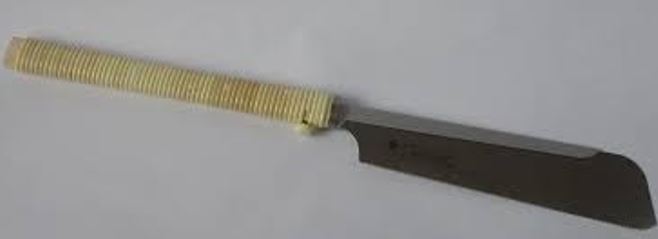If you’re unable to cut and divide wood into different lengths – you won’t be able to build anything. This is where saws come into play.
In this guide, we’ll look at the difference between Western-style and Japanese saws and investigate why the latter has grown in popularity in recent years.
A Brief Introduction
Japan has a rich history of woodworking, with its own arsenal of tools, preferred joints and methods.
Carpenters in Japan tend to be divided up into four distinct groups, those working on the country’s renowned shrines and temples, residential or commercial carpenters, furniture makers and those specialising in interior finishing.
While there’s obviously some overlap within these professions, it’s more common for those specialising on temples and residences to overlap than furniture makers or interior specialists.
As well as the world-famous Japanese-style saw, which we’ll look at in depth a little later, there’s several other tools common to the country that are worth having a look at.
Japanese Plane(kanna): In a reversal of western-style planes, the janna is pulled towards the user, rather than being pushed away. These tend to be created using specific varies of oak and sport a laminated steel-and-iron blade that is stronger and thicker than those used in its western equivalents.
The kanna also boasts a chip breaker that uses bent blades to bear down on the main planning blade. And its relatively simple design hides a wealth of complexity.
Japanese chisel (nomi): There’s a much larger range of nomi than western-style chisels and these differ in both form and gradation. These include:
- Paring chisels
- Striking chisels
- Chisels geared towards use with heavy timber
- Bench chisels
As Japanese craftsmen have typically favoured softwoods, the majority of chisels are geared toward this role, although varieties with steeper bevels are available for hardwoods.
Japanese gimlet (kiri): Despite the relatively simple role of boring circular holes in objects, the kiri has developed a reputation as being one of the hardest Japanese tools to master.
Japanese inkpot (sumitsubo): While we favour a good old pencil and ruler combo, our Japanese counterparts utilise this nifty bit of kit to draw long straight lines on surfaces.
Western and Japanese Handsaws
As you’re probably aware – hand saws are a perennially popular tool that lets woodworkers use the entire force of their body when making a cut.
When we refer to ‘western’ hand saws, there’s a plethora of variations designed for specific tasks. For instance, crosscut saws are used to slice across the gain of the timer, while a keyhole saw uses a removable blade to cut large openings in surfaces.
The main difference between Japanese saws (also known as nokogiri) and western saws lies in the technique. Put simply, western saws cut on the push stroke while their eastern cousins cut on the pull stroke.
This technique brings several benefits. For example, it enables woodworkers to use thinner blades – enhancing the efficiency of cutting and leaving a narrower kerf (or cut width).
While you can’t get as much as your body weight behind the stroke as with western saws, the grace and accuracy of the nokogiri has led its popularity to grow among woodworkers the world over.
As with western saws, Japanese hand saws come in several varieties, each designed to tackle a specific task.
Dozuki: The Japanese equivalent of the backsaw, this tool’s name literally translates as ‘attached trunk’ – referring to the stiffening strip at the back.
Ryoba: This double-edged saw boasts a cross-cutting blade on one side and a ripping blade on the other.
Azebiki: A smaller kind of ryoba, typically used to cut into the flat surface of a board thanks to the convex curve of its blade.
Mawashibiki: Translated as ‘turning cut’ – this is the Japanese version of the keyhole saw and is used to cut in curves.
Turning Japanese
So why are so many western woodworkers turning to the Far East for their tools? While not inherently superior to western saws, the finesse and reliability with which nokogiri can be wielded makes them especially useful when it comes to joinery and billeting on specific types of projects.
Similarly, the lightweight handle’s oval-shaped profile makes it incredibly ergonomic to use – enhancing the saw’s flexibility by giving the wielder the opportunity to change the position of their hands according to the demands of the task at hand.
Some claim that nokogiri are so comfortable and precise that they become an extension of the woodworker’s arm – enabling them to achieve unbridled accuracy when cutting. And by cutting on the pull stroke, they facilitate a much thinner blade, giving the user a better field of vision.
They also offer durability and great value for money. While you probably won’t be able to sharpen the blades yourself – replacements are easy and inexpensive to source and if you use the proper techniques – as a whole, you could get decades’ of use out of the tool.
And You?
If you’ve had the chance to try a Japanese-style saw, or think we’ve missed any of their major flaws – be sure to fire us a tweet, we always love to hear from you.
And if you’re looking for some quality timber to try out a new Japanese saw on, be sure to check out our fantastic range, or simply get in touch today.
Images used courtesy of Wikimedia Commons.
